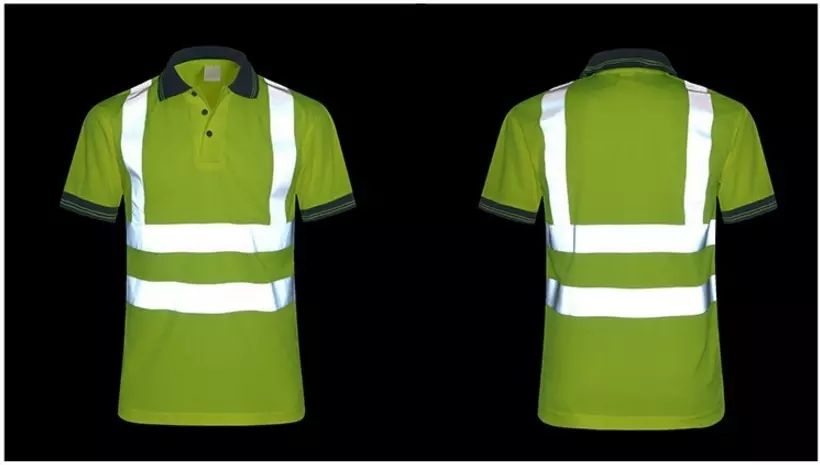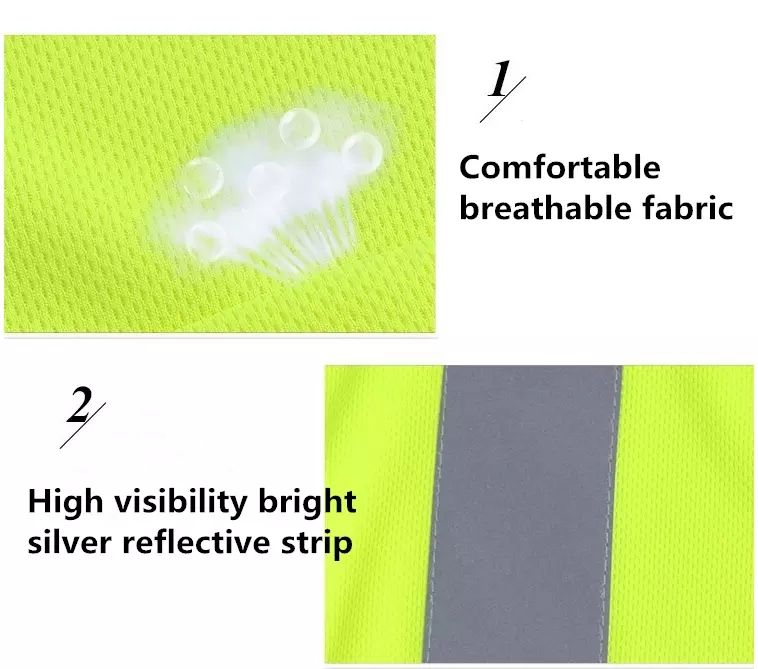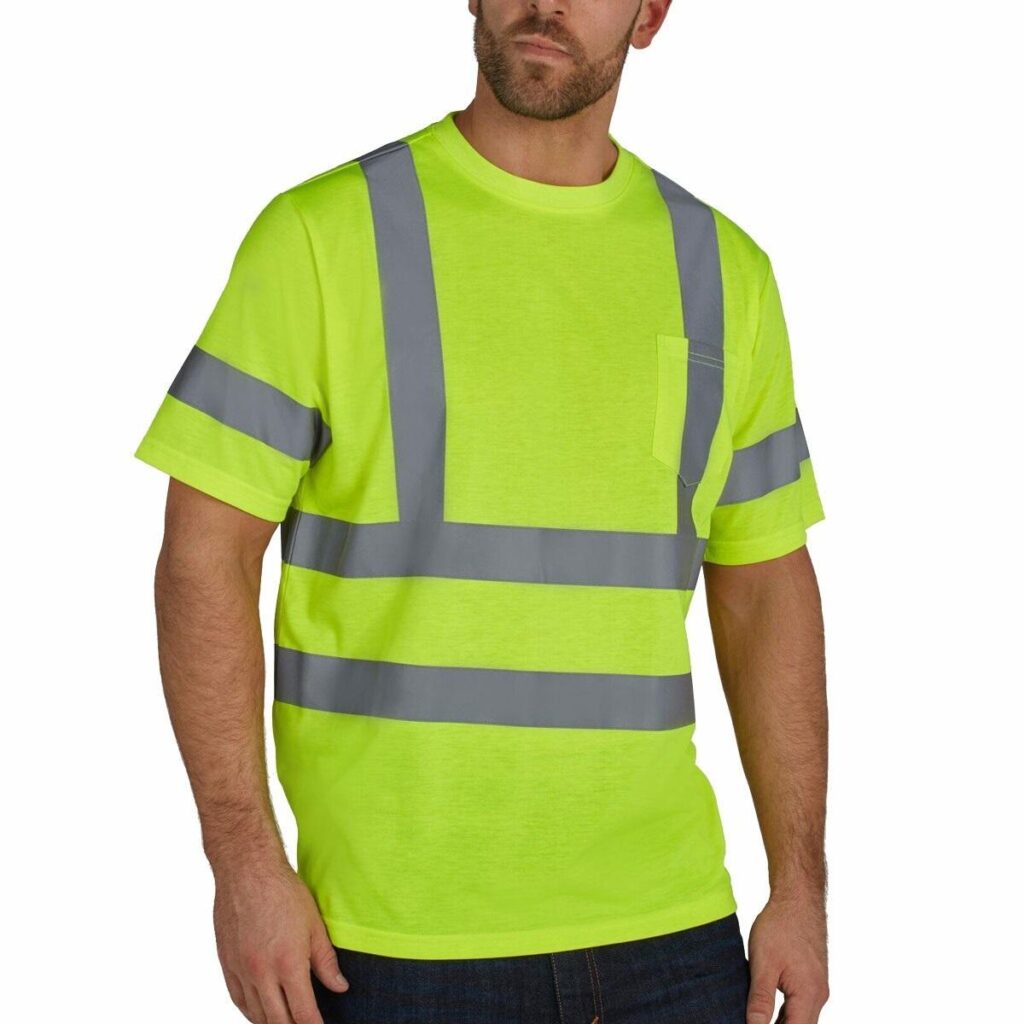What is high-visibility clothing?
High visibility clothing, also known as hi-vis or reflective clothing, is designed to make the wearer more visible in low-light conditions and in areas with poor visibility due to fog or heavy rain. This type of clothing is often used in industries where workers are at risk of being struck by moving vehicles or heavy equipment, such as construction, transportation, and warehousing.
What should be considered when choosing high-visibility clothing?
When choosing high-visibility clothing, it is important to understand the different types of clothing available and the specific requirements for each type. Here is a guide to help you choose the right high-visibility clothing for your needs:
- Class 1: This type of high-visibility clothing is designed for workers who are at low risk of being struck by vehicles or heavy equipment. Class 1 clothing includes items such as vests, hats, and armbands.
- Class 2: This type of high-visibility clothing is designed for workers who are at a moderate risk of being struck by vehicles or heavy equipment. Class 2 clothing includes items such as vests, jackets, and pants.
- Class 3: This type of high-visibility clothing is designed for workers who are at a high risk of being struck by vehicles or heavy equipment. Class 3 clothing includes items such as vests, jackets, pants, and coveralls.
- Type R: This type of high-visibility clothing is designed for workers who are working on roads with high-speed traffic. Type R clothing includes items such as vests, jackets, pants, and coveralls.
- Type P: This type of high-visibility clothing is designed for workers who are working on roads with low-speed traffic. Type P clothing includes items such as vests, jackets, pants, and coveralls.
When choosing high-visibility clothing, it is also important to consider the specific needs of your employees and the type of work they will be doing. For example, if your employees will be working in areas with a lot of dust or debris, you may want to consider clothing made from breathable, moisture-wicking fabrics that will help to keep them cool and comfortable. Additionally, you should also consider the durability of the clothing and whether it will be able to withstand the wear and tear of daily use.
In addition to the above mentioned, it is also important to be aware of the color and pattern of the high visibility clothing. The most common color for high-visibility clothing is fluorescent yellow-green and orange. The color should be bright enough to be visible in all lighting conditions. Reflective tape is also an important element in high-visibility clothing, it helps to reflect light and make the wearer more visible in low-light conditions.
Overall, high-visibility clothing is essential for workers who are at risk of being struck by vehicles or heavy equipment. By choosing high-quality clothing that is designed to meet the specific needs of your employees, you can improve their safety and productivity on the job.

What are the different types of hi-vis clothing available?
There are several different types of high visibility (hi-vis) clothing available, each designed for specific work environments and activities. Some of the most common types include:
- Vests: Hi-vis vests are the most common type of hi-vis clothing. They are lightweight and easy to wear, making them a popular choice for workers who need to be visible while also having freedom of movement. Vests are available in both Class 1 and Class 2 options.
- Jackets: Hi-vis jackets are designed to provide additional protection from the elements while also increasing visibility. They are available in Class 2 and Class 3 options and can be worn over regular clothing to provide an extra layer of protection.
- Pants: Hi-vis pants are designed to be worn with hi-vis vests or jackets. They are available in Class 2 and Class 3 options and can be worn over regular pants for added visibility.
- Coveralls: Hi-vis coveralls are designed for workers who need full body visibility. They are available in Class 3 options and are often worn by workers in construction, transportation, and warehousing.
- Hats and armbands: Hi-vis hats and armbands are designed to be worn with other hi-vis clothing to increase visibility. They are available in Class 1 options and are often worn by workers who need extra visibility on the head or arms.
- Rainwear: Hi-vis rainwear is designed to keep workers visible and dry in wet weather conditions. They are available in Class 2 and Class 3 options and are often worn by workers in construction, transportation, and warehousing.
It’s important to note that different hi-vis clothing is designed for different levels of visibility and protection. For example, Class 1 clothing is designed for workers who are at low risk of being struck by vehicles or heavy equipment, while Class 3 clothing is designed for workers who are at high risk. It’s important to choose the appropriate class of hi-vis clothing for the specific work environment and activity.

Who is required to wear High Visibility?
According to OSHA (Occupational Safety and Health Administration) in the United States, high-visibility clothing is required for workers who are at risk of being struck by vehicles or heavy equipment. This includes workers in industries such as construction, transportation, and warehousing, as well as workers who are performing tasks such as flagging, directing traffic, and working near roadways.
In general, OSHA requires employers to provide and ensure the use of high-visibility clothing when workers are exposed to public vehicular traffic or construction equipment within the right-of-way of a public street, highway, or roadway. OSHA also requires employers to ensure that the high visibility clothing conforms to the appropriate ANSI/ISEA 107 standard.
In addition to OSHA requirements, some states and municipalities may also have their own regulations regarding high-visibility clothing. Employers are responsible for staying informed about and complying with any applicable laws or regulations in their area.
It’s important to note that while OSHA requires high-visibility clothing for workers who are at risk of being struck by vehicles or heavy equipment, it’s also a good practice for any worker who may be exposed to low-visibility conditions to wear high-visibility clothing. This can include workers who are performing tasks such as walking, cycling, or jogging on or near roads where visibility is limited.

Why high visibility clothing is important?
High visibility clothing, also known as hi-vis or reflective clothing, is important for several reasons:
- Safety: The main purpose of high-visibility clothing is to increase the visibility of the wearer in low-light conditions and in areas with poor visibility due to fog or heavy rain. This can help to reduce the risk of accidents and injuries on the job, especially for workers who are at risk of being struck by moving vehicles or heavy equipment.
- Compliance: High visibility clothing is often required by OSHA (Occupational Safety and Health Administration) and other safety regulations for workers who are at risk of being struck by vehicles or heavy equipment. Employers are responsible for providing and ensuring the use of high-visibility clothing that conforms to the appropriate ANSI/ISEA 107 standard.
- Branding: High-visibility clothing can also be used as a branding tool, by adding a company’s logo or name to the clothing, can create a visual representation of your brand that will be seen by anyone who comes into contact with your employees.
- Productivity: By providing high-visibility clothing to employees, it can also help to improve the morale and productivity of your employees by giving them a sense of protection and security while they are on the job.
- Weather protection: Some high-visibility clothing also provides protection from weather elements such as rain, wind, and cold. This can help to improve the comfort and safety of workers who are working in outdoor environments.


